
by Jason Betzner Thursday, January 5, 2012
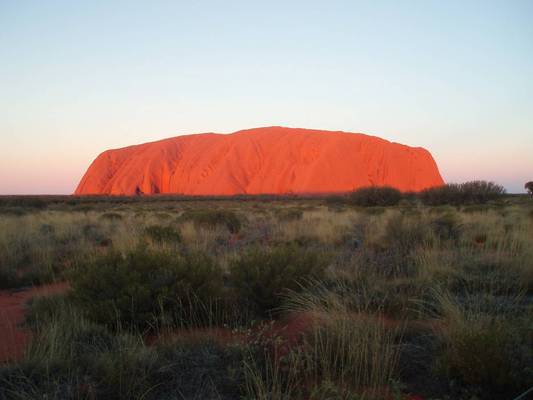
Ayers Rock at sunset. Why the world's largest monolith is in an otherwise flat terrain is a geological mystery. Jason Betzner
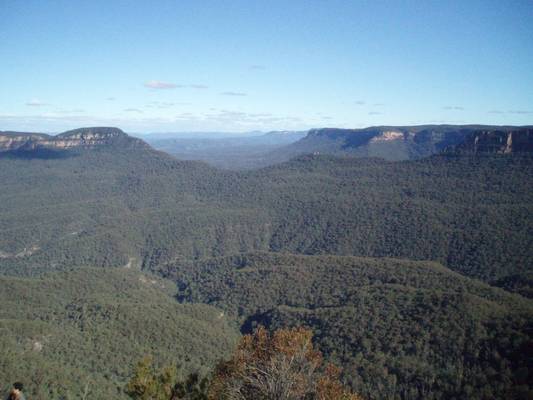
The Blue Mountains glow in the mid-morning sunlight. Jason Betzner
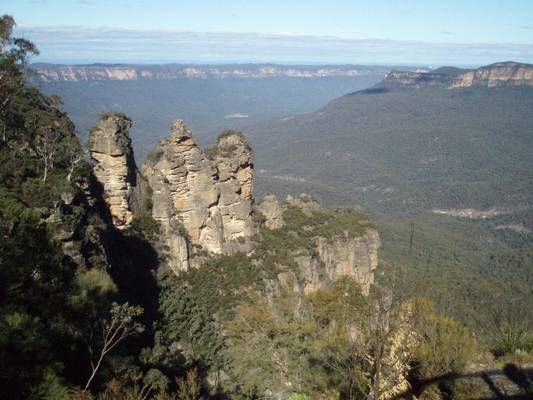
The Three Sisters are composed of sandstone carved by wind and rain. The Aborigines believe the Three Sisters were women turned to stone by a magician. Jason Betzner
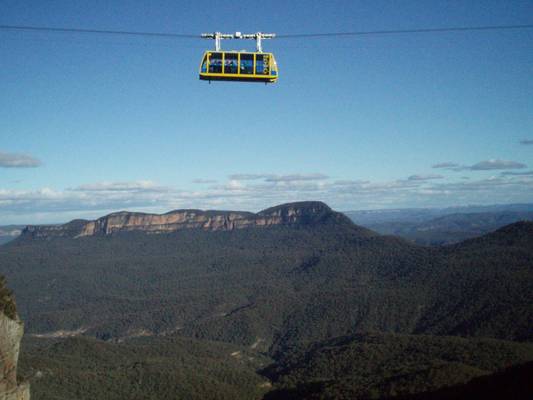
A cable car carries tourists in the Blue Mountains across a valley thousands of meters below. Jason Betzner
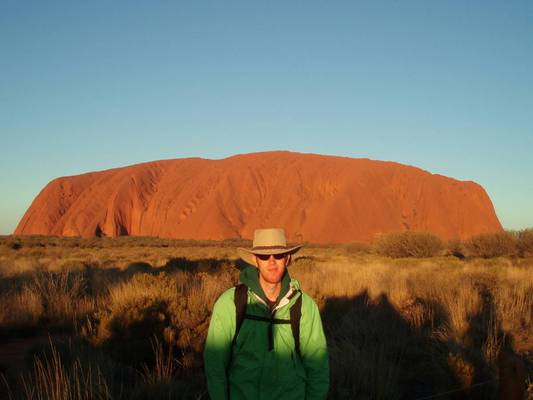
In the dead center of Australia, Ayers Rock rises above the bush. Sunset brings an orange, red and purple glow to its walls. Jason Betzner
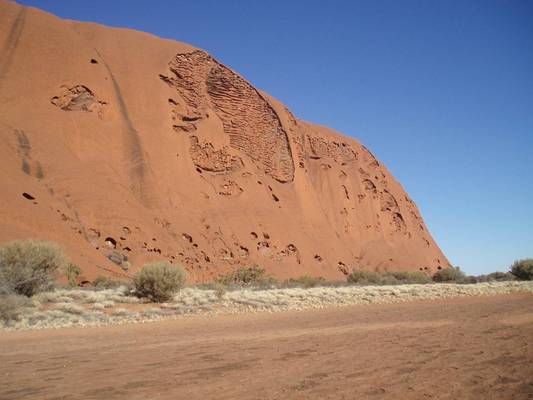
Ayers Rock displays many odd weathering patterns, such as honeycomb weathering. Although common in coastal and semi-arid environments, its cause is still disputed by geologists. Jason Betzner
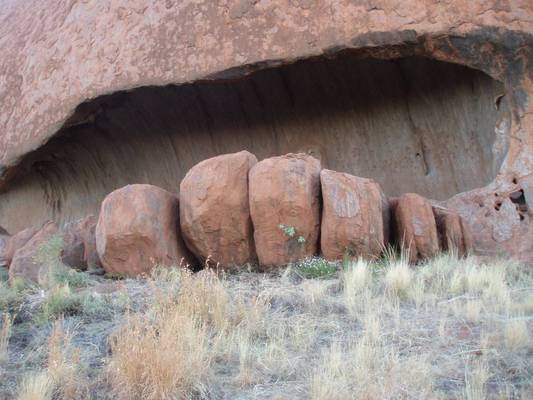
Baffling weathering patterns on Ayers Rock: The large scour shape suggests the rock was powerfully carved by water. The alignment of the boulders in such an organized pattern is particularly strange. Jason Betzner
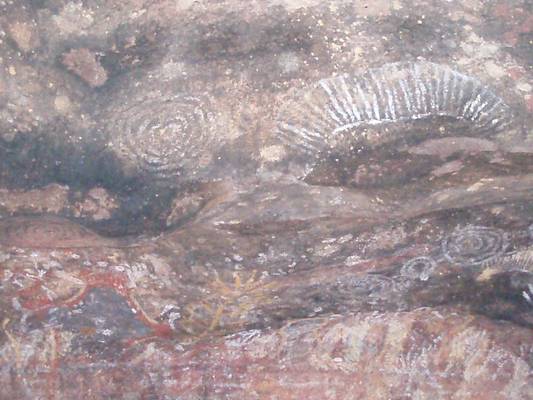
Aboriginal paintings on Ayers Rock. Jason Betzner
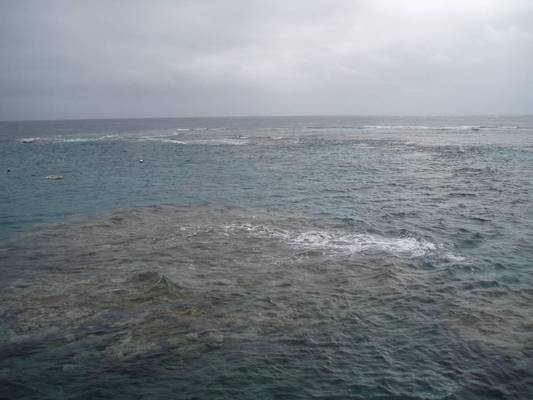
Cairns, on the Northeastern coast of Australia, is the gateway to the Great Barrier Reef. The reef (dark patch) is just visible in the shallow water. Jason Betzner
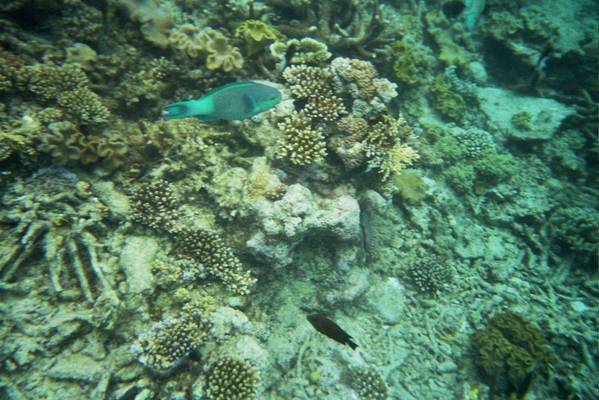
A parrot fish (blue) and an angel fish (black) hover over soft corals. The parrot fish use their hard "beak" to gnaw at the coral, which is their primary food source. (You can actually hear the gnawing while snorkeling.) Jason Betzner
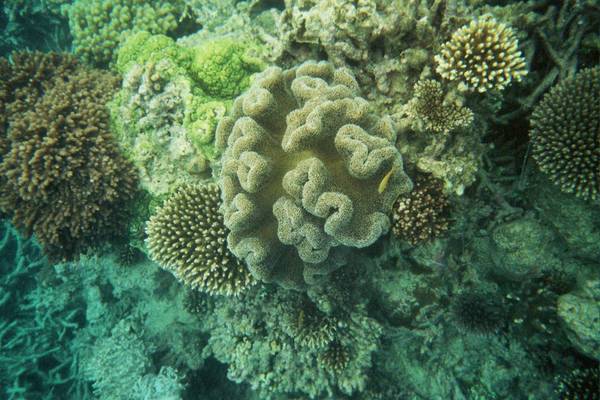
Colorful soft corals (top half) are surrounded by bleached, dead corals (bottom half). Jason Betzner
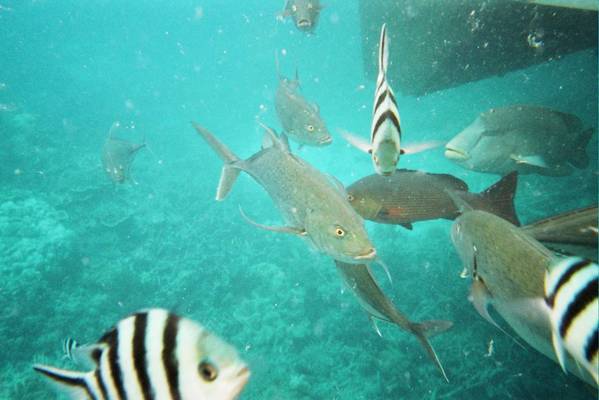
Zebra fish and two different types of groupers on the Great Barrier Reef. Jason Betzner

A very friendly grouper on the Great Barrier Reef. Jason Betzner
Australia, both a country and a continent, has geological wonders as strange and unique as the furry marsupials that inhabit the Land Down Under.
From the Blue Mountains west of Sydney in New South Wales, where the soft sunlight of morning gives a misty blue tint to the landscape, to Ayers Rock in the Red Center where even the winter temperatures rise above 27 degrees Celsius, Australia is a harsh and beautiful landscape. Off the Queensland coast lies the Great Barrier Reef, thousands of kilometers long and comprising thousands of smaller reefs each with its own array of flora and fauna. It is the last of the great reef systems on Earth and it is in jeopardy from a changing climate and rising sea level.
The scenic beauty of the Blue Mountains rivals the beauty of the Appalachian Mountains of North America when the leaves have turned and the air is crisp. Once a great sandstone plateau, the Blue Mountains have been cut and gorged by many rivers, leaving spectacular views. Most of the exposed rock consists of sandstone, shale and coal, which was uplifted as part of the Sydney Basin. The rich coal deposits are similar to those of the Appalachians, and both coal and oil shale have been mined extensively over the years. A two-hour train ride from Sydney, Australia, the best access to Blue Mountains National Park is through the town of Katoomba, where a free trolley takes visitors directly to the park entrance. From there, a variety of trails are available for hiking.
The Blue Mountains are home to one of the most famous rock formations in Australia, the Three Sisters. These three pillars of sandstone, weathered by wind and rain over millions of years, sit over a cliff plunging thousands of meters into the valley below. According to an Aboriginal story, the Three Sisters were once in love with the same man. Tired of hearing them bicker, their father called in a magician who turned the three women to stone and promised to revive them after their lover was dead and gone. But the magician was later killed and therefore unable to reverse his magic. And so they stand, forever frozen in stone.
How Australian explorers crossed the Blue Mountains and ventured into the forbidding outback is its own tale. In the late 1700s and early 1800s, settlers in Australia hunted for a westward passage through the mountains, hoping to find ample grazing lands for their cattle. After searching for months and then years, the cattle sped up the process: They wandered off on their own. The settlers followed the cattle through a valley, through the mountains and into the harsh, sandy, rocky uninhabitable outback.
Far to the west of the Blue Mountains, in the heart of the Australian continent, Ayers Rock rises above the red earth and clay of the outback to stand alone as the largest monolith in the world. Ayers Rock, or Uluru (the Aboriginal name), is internationally recognized as a symbol of Australia and is one of the most mystifying and beautiful monuments in the world. At sunset, the massive walls of Ayers Rock take on fiery hues of orange, red and purple. The Aborigines see it as a sacred landmark and many parts of the rock are off-limits to tourists and photography out of respect for native culture. Aboriginal paintings on Ayers Rock display ’target’-like symbols indicating watering holes, some of which have been around for thousands of years. These Aboriginal paintings often serve as maps to important locations or tell creation stories. Some paintings indicate who may use a particular space — for example, some parts of Ayers Rock may only be accessed by males and others only by females.
Perhaps the most interesting geologic aspect of Ayers Rock is that so little is known about how it formed. Books and national park handouts give vague explanations. The most common hypothesis states that Ayers Rock is the last remnant of an ancient mountain range. The arkose sandstone that makes up the rock was deposited as part of an alluvial fan that later thrust upward during the Petermann Orogeny (mountain-building event) in the early Cambrian (between about 550 million and 535 million years ago). Over time, the mountain range eroded into the flat landscape of the present day outback, with Ayers Rock the only evidence that mountains ever existed in the central part of Australia.
This hypothesis leaves many unanswered questions, however. For example, there may have once been hundreds of other alluvial fans composed of arkose sand — so why would Ayers Rock be the only surviving remnant? There are other mountainous remnants close to Ayers Rock called the Kata Tjutas, which are composed of conglomerate. Geologists suggest that these formations survived erosion because conglomerate is generally more difficult to erode than sandstone. The geological story behind Ayers Rock may never be fully explained: Recently, the land that comprises Uluru/Kata Tjuta National Park was given back to the native people of Australia, and although the Aborigines agreed to lease the park to the Australian government, it is now nearly impossible to study the geology of the area
Accessed most easily by a plane from Sydney or other major airports, Ayers Rock is part of Uluru/Kata Tjuta National Park and a fee is required to get in. A walk around the base of the rock can take three hours, so plan accordingly. The best times to take pictures are at sunrise or at sunset, and drivers can be hired to take visitors in and out of the park, which opens at sunrise and closes after sunset.
Several kilometers off the Queensland coast in Northeastern Australia lies the Great Barrier Reef. Actually a compilation of approximately 3,000 smaller reefs, the Great Barrier Reef stretches 2,575 kilometers and is visible from space. A snorkeling trip to the Great Barrier Reef, home to many tropical species of fish, sea turtles, reef sharks, sea stars and sea cucumbers, can be a great way to observe its abundant life. All-day trips to the Great Barrier Reef can run around $100, but are definitely worth the money. Perhaps the one of the most interesting inhabitants is the giant clam, which can weigh several hundred pounds and contains enough meat to feed several families. Hunting of the giant clam is strictly off-limits except for local Aborigines.
The Great Barrier Reef is believed to have formed about 20,000 years ago, during a time of steadily rising sea levels that allowed the corals to grow upward. Corals need a warm, shallow ocean environment with very little sedimentation to survive, and the water off the Queensland coast meets these conditions.
In recent years, however, scientists have noticed that the water is warming. Corals are extremely sensitive to shifts in the biosphere, and if oceans continue to heat up, it may send the corals of the Great Barrier Reef into “shock,” eventually killing them. A similar event is thought to have occurred in the Upper Devonian (about 375 million years ago), at the Frasnian-Fammenian boundary, which was the second largest mass extinction in the Paleozoic. In that case, the seas went from being extremely warm to suddenly temperate. The change in temperature was enough to wipe out almost every reef-building coral for hundreds of thousands of years, leaving only microbial organisms to fill the niche and form reefs.
Already, large storms have damaged many of the reef systems comprising the Great Barrier Reef. It will take thousands of years for those barren coral beds to regrow to their former stature. Other reefs around Australia are undergoing bleaching, the process of losing color and ceasing to grow. Scientists are baffled as to why this is occurring in possibly one of the healthiest reef systems left on the planet. Some blame human impact, but ecotourism is such a vital part of Australia’s economy, and the reefs are therefore carefully protected, so that direct human impact seems unlikely. An overall climatic shift to warmer global temperatures may also be to blame, which has a chain-reaction effect that can cause devastation in a sensitive ecosystem.
From ocean to desert, Australia’s geology is unique. There are few other places in the world where so many different earth systems are found in such close proximity, and each with their own story to tell. The Aborigines regard Australia’s geological formations as sacred and mystical, and in doing so have left stories of their creation in paintings and writings. Geologists take pleasure in studying how the geology has formed the landscape over millions of years, and how that landscape is still changing today. In a continent that seems to scream adventure, there is always something to see in the Land Down Under.
© 2008-2021. All rights reserved. Any copying, redistribution or retransmission of any of the contents of this service without the expressed written permission of the American Geosciences Institute is expressly prohibited. Click here for all copyright requests.